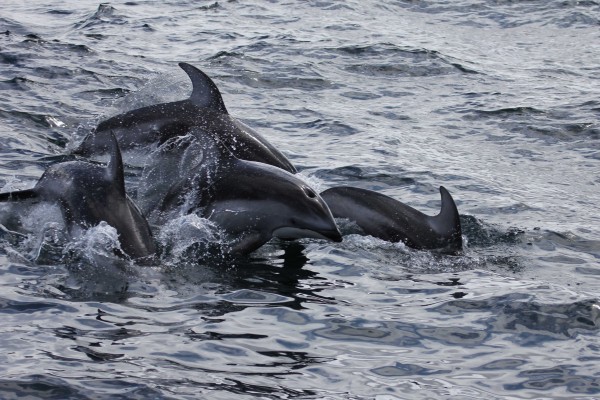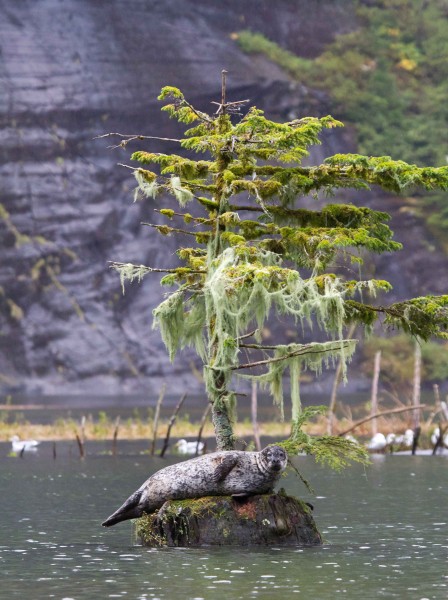Taking the helm: climate change and Canada's oceans
Not long ago, a group of WWF staff and supporters were snug on a boat tucked into a safe harbour, while hurricane-force winds raged nearby on the northern BC coast. We were cozy but the scene was still unsettling, because this was a winter-scale storm. And it was still summer.
Intensifying storm systems are just one of many predicted impacts of human-induced climate change. The recent IPCC report confirms that human activity is leading to warmer temperatures, rising sea levels, and melting glaciers. These changes will have impacts on land that we can see and feel. But the changes that are taking place in the sea — out of sight, and out of mind for many — may be even more alarming.
Changing ocean temperatures, currents, and biochemistry are already having profound impacts on marine ecosystems from tropical coral reefs to the Arctic. Here in Canada, shellfish are at risk of developing marine ‘osteoporosis’ from an increasingly acidic ocean, and oxygen depletion is displacing commercially valuable groundfish. As an ocean nation, and the steward of more coastline than any other country in the world, Canada has much to gain by taking action now to avert the worst marine impacts of climate change.
The science is in. As WWF-Canada CEO David Miller says , it’s up to us now. Luckily, as on land, there is much we can do on the water to help safeguard our rich and vital marine ecosystems. Here are just a few recommendations from a recent WWF-Canada Report:
- We can take steps to secure what we have. By creating more marine protected areas, especially in areas that are changing less or are more geographically protected, potential ‘climate refugia’, and reducing stressors (such as pollution and underwater noise) we can give fish, marine wildlife, and ocean ecosystems the space they need to stay strong.
- We can improve our understanding, and share our knowledge. Much of what happens in the ocean is still a mystery to us. But we can do more to track and monitor changes such as shifts in fish catch rates and species distributions, so we are better able to respond. At WWF, we’re creating reports and online toolkits to share what we are learning about climate change impacts in the sea.
- We can test new ideas. Researchers are developing ways to help ecosystems and species adapt to climate change impacts. Examples include cultivating new eelgrass beds in areas that may become submerged as sea levels rise; or developing ‘living breakwaters’ such as oyster reefs and kelp beds to protect shorelines from more violent waves.
- We can plan ahead. We can develop smarter ocean plans that help us gain more benefit from the sea, while reducing human impacts. By working together, governments, industry, scientists, and coastal communities can develop multi-use plans that mesh economic, social, and conservation goals.
On our sailboat, we trusted the skipper and crew to bring us safely through the storm. This bigger sea change is happening on our watch. It’s time for Canada to step up and take the helm.



